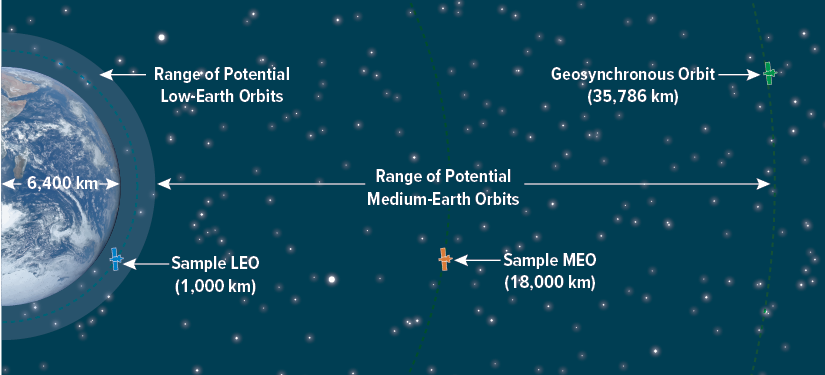
In recent years, commercial investment in space has greatly increased, with emphasis on low altitudes—about 300 kilometers (km) to 2,000 km (or roughly 190 miles to 1,240 miles) above the Earth. Today, several companies plan to build and launch very large constellations of satellites in orbits at those altitudes. Similarly, the Department of Defense (DoD) has begun to plan for new large constellations of satellites at lower orbits to make the performance of their satellite missions more resilient against interference and attack by adversaries.
In this report, the Congressional Budget Office provides an introduction to the advantages of and challenges for constellations of low-altitude satellites. In particular, the report describes the effects that orbital altitude has on the design of satellites and constellations of those satellites, focusing on DoD’s Earth-observation and communications missions. The highlights of that review include the following:
- Most satellites operate in roughly circular orbits between about 300 km and about 36,000 km above the Earth. Those orbits are separated into three categories: Low-Earth orbits (LEOs) range from 300 km to 2,000 km above the Earth’s surface; medium-Earth orbits (MEOs) range from 2,000 km to about 35,000 km; and geosynchronous orbits (GEOs) operate at 35,786 km.
- Satellites in LEO generally are smaller, cost less, and have shorter operational lifetimes than those at higher altitudes. More LEO satellites are generally needed to achieve coverage comparable to smaller constellations at higher altitudes, and the LEO satellites need to be replaced more often to maintain the constellation.
- Operating in LEO potentially allows for more timely communications, higher resolution imagery, and, for large constellations, greater resilience against attack or interference because many satellites share the same mission. However, LEO satellites can view a given point on Earth for only about 10 minutes, making constellation management more complex if continuous communication or observation is required.
- The costs of maintaining LEO constellations for many years are potentially higher than MEO or GEO constellations with comparable coverage, but LEO costs could be reduced if mass production significantly decreased unit costs or if launch costs continued to decline.
Common Orbital Regimes
Originally published at https://www.cbo.gov/publication/58794



